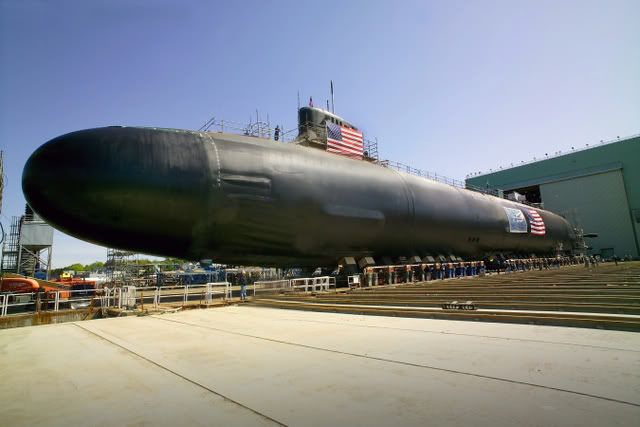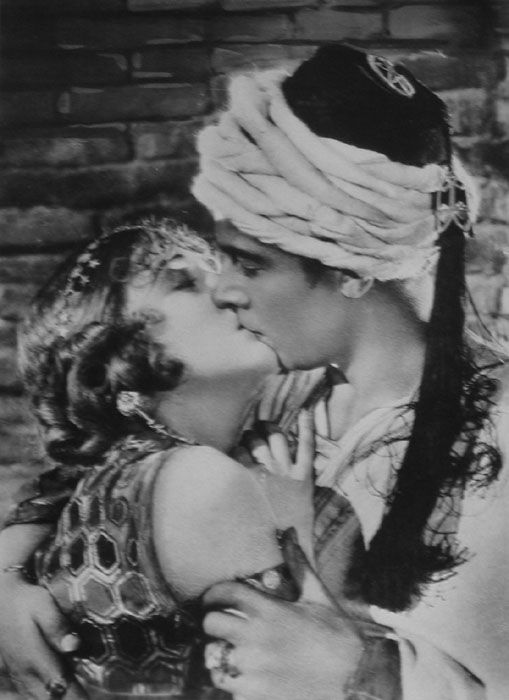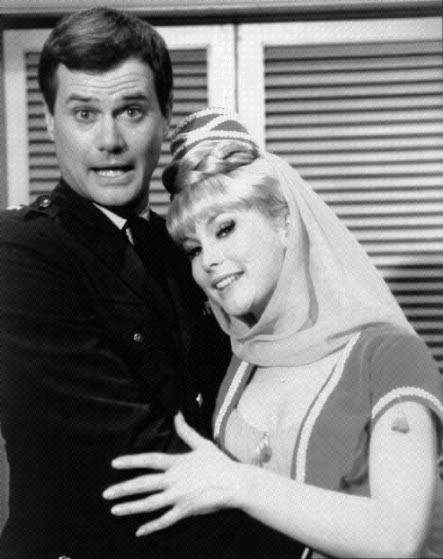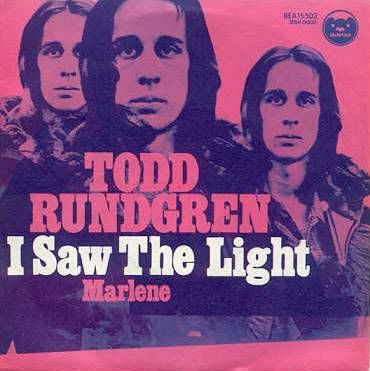Adolf Hitler - Triumph of Will - Closing Ceremony
I just watched "Triumph of Will" which is a video which Mr. Adolf Hitler made back in 1934. People say that Adolf Hitler was this great communicator, but I didn't understand a word he said. He seems to get to shouting, but about what, I haven't a clue. Also, Hitler looks weird, he has this strange hair cut, and a little postage stamp mustache.
Not only that, but this video which he is credited for having made totally sucks. The music is too loud, it's too dark, and all the people look really weird in it - sort of like they all worship the guy. Two thumbs way down for Adolf Hitler's movie Triumph of Will.
Oh yes, Hitler was a rotten piece of human garbage and he's burning in hell now. Almost forgot to throw that in.
Despite my critique here's what wikipedia has on it about the video - it actually won some awards - go figure.
Triumph of the Will (German: Triumph des Willens) is a propaganda film by the German filmmaker Leni Riefenstahl. It chronicles the 1934 Nazi Party Congress in Nuremberg. The film contains excerpts from speeches given by various Nazi leaders at the Congress, including portions of speeches by Adolf Hitler, interspersed with footage of massed party members. Hitler commissioned the film and served as an unofficial executive producer; his name appears in the opening credits. The overriding theme of the film is the return of Germany as a great power, with Hitler as the True German Leader who will bring glory to the nation.
Triumph of the Will was released in 1934 and rapidly became one of the better-known examples of propaganda in film history. Riefenstahl's techniques, such as moving cameras, the use of telephoto lenses to create a distorted perspective, aerial photography, and revolutionary approach to the use of music and cinematography, have earned Triumph recognition as one of the greatest films in history. Riefenstahl won several awards, not only in Germany but also in the United States, France, Sweden, and other countries. The film was popular in the Third Reich[1] and elsewhere, and has continued to influence movies, documentaries, and commercials to this day, even as it raises the question over the dividing line between art and morality.[2]
Contents[hide] |
[edit] Synopsis
The film begins with a prologue, the only commentary in the film. The following text appears against a gray background: On September 5, 1934, ... 20 years after the outbreak of the World War ... 16 years after the beginning of our suffering ... 19 months after the beginning of the German renaissance ... Adolf Hitler flew again to Nuremberg to review the columns of his faithful followers…
'Day 1': The film opens with shots of the clouds above the city, and then moves through the clouds to float above the assembling masses below, with the intention of portraying beauty and majesty of the scene. The shadow of Hitler's plane is visible as it passes over the tiny figures marching below,[3] accompanied by music from Richard Wagner's Die Meistersinger von Nürnberg, which slowly turns into the Horst-Wessel-Lied. Upon arriving at the Nuremberg airport, Hitler emerges from his plane to thunderous applause and a cheering crowd. He is then driven into Nuremberg, through equally enthusiastic people, to his hotel where a night rally is later held.
'Day 2': The second day begins with a montage of the attendees getting ready for the opening of the Reich Party Congress, and then footage of the top Nazi officials arriving at the Luitpold Arena. The film then cuts to the opening ceremony, where Rudolf Hess announces the start of the Congress. The camera then introduces much of the Nazi hierarchy and covers their opening speeches, including Joseph Goebbels, Alfred Rosenberg, Hans Frank, Fritz Todt, Robert Ley, and Julius Streicher. Then the film cuts to an outdoor rally for the Reichsarbeitsdienst (Labor Service), which is primarily a series of pseudo-military drills by men carrying shovels. This is also where Hitler gives his first speech on the merits of the Labor Service and praising them for their work in rebuilding Germany. The day then ends with a torchlight SA parade.
'Day 3': The third day starts with a Hitler Youth rally on the parade ground. Again the camera covers the Nazi dignitaries arriving and the introduction of Hitler by Baldur von Schirach. Hitler then addresses the Youth, describing in militaristic terms how they must harden themselves and prepare for sacrifice. Everyone present then assembles for a military pass and review, featuring Wehrmacht cavalry and various armored vehicles. That night Hitler delivers another speech to low-ranking party officials by torchlight, commemorating the first year since the Nazis took power and declaring that the party and state are one entity.
'Day 4': The fourth day is the climax of the film, where the most memorable of the imagery is presented. As the soundtrack plays themes from Wagner's Götterdämmerung, Hitler, flanked by Heinrich Himmler and Viktor Lutze, walks through a long wide expanse with over 150,000 SA and SS troops standing at attention, to lay a wreath at a World War I Memorial. Hitler then reviews the parading SA and SS men, following which Hitler and Lutze deliver a speech where they discuss the Night of the Long Knives purge of the SA several months prior. Lutze reaffirms the SA's loyalty to the regime, and Hitler absolves the SA of any crimes committed by Ernst Röhm. New party flags are consecrated by touching them to the "blood banner" (the same cloth flag said to have been carried by the fallen Nazis during the Beer Hall Putsch) and, following a final parade in front of the Nuremberg Frauenkirche, Hitler delivers his closing speech. In it he reaffirms the primacy of the Nazi Party in Germany, declaring, "All loyal Germans will become National Socialists. Only the best National Socialists are party comrades!" Hess then leads the assembled crowd in a final Sieg Heil salute for Hitler, marking the close of the party congress. The film fades to black as the entire crowd sings the "Horst-Wessel-Lied".
[edit] Origins
"Shortly after he came to power Hitler called me to see him and explained that he wanted a film about a Party Congress, and wanted me to make it. My first reaction was to say that I did not know anything about the way such a thing worked or the organization of the Party, so that I would obviously photograph all the wrong things and please nobody — even supposing that I could make a documentary, which I had never yet done. Hitler said that this was exactly why he wanted me to do it: because anyone who knew all about the relative importance of the various people and groups and so on might make a film that would be pedantically accurate, but this was not what he wanted. He wanted a film showing the Congress through a non-expert eye, selecting just what was most artistically satisfying — in terms of spectacle, I suppose you might say. He wanted a film which would move, appeal to, impress an audience which was not necessarily interested in politics." -- Leni Riefenstahl[4]
Riefenstahl, a popular German actress, had directed her first movie called Das Blaue Licht (The Blue Light) in 1932. Around the same time she first heard Hitler speak at a Nazi rally and, by her own admission, was impressed. She later began a correspondence with him that would last for years. Hitler, by turn, was equally impressed with Das Blaue Licht, and in 1933 asked her to direct a film about the Nazi's annual Nuremberg Rally. The Nazis had only recently taken power amid a period of political instability (Hitler was the fourth Chancellor of Germany in less than a year) and were considered an unknown quantity by many Germans, to say nothing of the world.
Riefenstahl was initially reluctant, not because of any moral qualms, but because she wanted to continue making feature films. Hitler persisted and Riefenstahl eventually agreed to make a film at the 1933 Nuremberg Rally called Der Sieg des Glaubens. However the film had numerous technical problems, including a lack of preparation (Riefenstahl reported having just a few days) and Hitler's apparent unease at being filmed. To make matters worse, Riefenstahl had to deal with infighting by party officials, in particular Joseph Goebbels who tried to have the film released by the Propaganda Ministry. Though Sieg apparently did well at the box office, it later became a serious embarrassment to the Nazis after SA Leader Ernst Röhm, who had a prominent role in the film, was executed during the Night of the Long Knives.
In 1934, Riefenstahl had no wish to repeat the fiasco of Sieg and initially recommended fellow director Walter Ruttmann. Ruttmann's film, which would have covered the rise of the Nazi Party from 1923 to 1934 and been more overtly propagandistic (the opening text of Triumph was his), did not appeal to Hitler. He again asked Riefenstahl, who finally relented (there is still debate over how willing she was) after Hitler guaranteed his personal support and promised to keep other Nazi organizations, specifically the Propaganda Ministry, from meddling with her film.
[edit] Filmmaking
Unlike Der Sieg des Glaubens (German: victory of faith), Riefenstahl shot Triumph of the Will with a large budget, extensive preparations, and vital help from high-ranking Nazis like Goebbels. As Susan Sontag observed, "The Rally was planned not only as a spectacular mass meeting, but as a spectacular propaganda film."[5] Albert Speer, Hitler's personal architect designed the set in Nuremberg and did most of the coordination for the event.[3] Riefenstahl also used a film crew that was extravagant by the standards of the day. Her crew consisted of 172 people, including ten technical staff, thirty-six cameramen and assistants (operating in 16 teams with 30 cameras), nine aerial photographers, 17 newsreel men, 12 newsreel crew, 17 lighting men, two photographers, 26 drivers, 37 security personnel, four labor service workers, and two office assistants. Many of her cameramen also dressed in SA uniforms so they could blend into the crowds.[6]
The New York Times has said it took almost two years to edit the final version from 250 miles (400 km) of raw footage.[7] However, this time frame is obviously incorrect, as there were only 200 days between the rally in September 1934 and the premiere in March 1935. The New York Times is most likely referring to "Olympia", Riefenstahl's documentary about the 1936 Berlin Olympic games. In the documentary "The Wonderful, Horrible Life of Leni Riefenstahl," the 400,000 meters (250 miles) of footage and the two years of editing are mentioned. In Triumph of the Will, however, Riefenstahl did have the difficult task of condensing an estimated 61 hours of film into two hours.[6] She labored to complete the film as fast as she could, going so far as to sleep in the editing room filled with hundreds of thousands of feet of film footage.[8]
[edit] Themes
"[Triumph of the Will is] the supreme visualisation in cinematic form of the Nazi political religion. Its artistry, reinforced by the grandeur and power of the Nuremberg decor, is designed to sweep us into empathetic identification with Hitler as a kind of human deity. The massive spectacle of regimentation, unity and loyalty to the Führer powerfully conveys the message that the Nazi movement was the living symbol of the reborn German nation." -- Professor Robert Wistrich[4]
- Religion: This morning's opening meeting…was more than a gorgeous show, it also had something of the mysticism and religious fervor of an Easter or Christmas Mass in a great Gothic cathedral." -- Reporter William Shirer[16]
Religion is a major theme in Triumph. The film opens with a Point Of View coming godlike out of the skies to alight on twin cathedral spires. It contains many scenes of church bells ringing, and individuals in a state of near-religious fervor, as well as a prominent shot of Reich Bishop Ludwig Müller standing in his vestments among high-ranking Nazis. It is probably not a coincidence that the final parade of the film was held in front of the Nuremberg Frauenkirche. In his final speech in the film, Hitler also directly compares the Nazi party to a holy order, and the consecration of new party flags by having Hitler touch them to the "blood banner" has obvious religious overtones. Hitler himself is portrayed in a messianic manner, from the opening where he descends from the clouds, to his drive through Nuremberg where even a cat stops what it is doing to watch him, to the many scenes where — standing on his podium — he will issue a command to hundreds of thousands of followers and the audience will comply in unison. Frank Tomasulo comments that in Triumph, "Hitler is cast as a veritable German Messiah who will save the nation, if only the citizenry will put its destiny in his hands."[9]
- Power: "It is our will that this state shall endure for a thousand years." -- Hitler
Germany had not seen images of military power and strength since the end of World War I, and the huge formations of men would remind the audience that Germany was becoming a great power once again. Though the men carried shovels, they handled them as if they were rifles. The Eagles and Swastikas could be seen as a reference to the Roman Legions of antiquity.[17] The large mass of well-drilled party members could be seen in a more ominous light, as a warning to anyone thinking of challenging the regime. Hitler's arrival in an airplane should also be viewed in this context. According to Kenneth Poferl, "Flying in an airplane was a luxury known only to a select few in the 1930s, but Hitler had made himself widely associated with the practice, having been the first politician to campaign via air travel. Victory reinforced this image and defined him as the top man in the movement, by showing him as the only one to arrive in a plane and receive an individual welcome from the crowd. "Hitler's speech to the SA also contained an implied threat: if he could have Röhm -- the commander of the hundreds of thousands of troops on the screen -- shot, it was only logical to assume that Hitler could get away with having anyone executed.[3]
- Unity: "The Party is Hitler - and Hitler is Germany just as Germany is Hitler!" -- Hess
Triumph has many scenes that blur the distinction between the Nazi Party, the German State, and the German People. There are scenes where Germans in peasant farmers’ costumes and other traditional clothing greet Hitler. The torchlight processions, though now associated by many with the Nazis, would remind the viewer of the medieval Karneval celebration. The old flag of Imperial Germany is also shown several times flying alongside the Swastika, and there is a ceremony where Hitler pays his respects to soldiers who died in World War I (as well as President Paul von Hindenburg who had died a month before the convention). There is also a scene where the Labor Servicemen individually call out which town or area in Germany they are from, reminding the viewers that the Nazi Party had expanded from its stronghold in Bavaria to become a pan-Germanic movement.
[edit] The Pride in a Nation
| This section does not cite any references or sources. Please improve this section by adding citations to reliable sources. Unverifiable material may be challenged and removed. (January 2008) |
Among the themes presented, the desire for pride in Germany and the purification of the German people is well exemplified through the speeches and ideals of the Third Reich in Triumph. Before Hitler could invoke his image of the Aryan Race, he came to power when he was elected as a Chancellor. Though he was put into political power, it was not believed that he would do anything meaningful. “a newspaper aligned to the Bavarian People's Party, that Hitler Chancellorship marked a ‘leap into the dark’…the view prevailed that Hitler would be no more than the ‘front-man’ for a cabinet of reactionaries dominated by Hugenberg, von Papen, and their friends, the direct representatives of Germany's ruling classes." The Hitler Myth. Even with the predictions made about Hitler, the extremes he went to for his vision could not, might not have been predictable. While Hitler was appointed Chancellor, his power grew, along with his influence on the people. With his growing influence he would become the most influential power of Nazi Germany until its demise at the end of World War II.
In every speech given and shown in Triumph, pride is one of the major focuses. Hitler would advocate to the people that they should not be satisfied with their current state and they should not be satisfied with the dissention from power and greatness Germany has endured since World War I. The German people should believe in themselves and the movement that is occurring in Germany. Hitler promotes pride in Germany through the unification of it. While unifying Germany, it would force the elimination of what does not amount to the standards of the Nazi regime.
To unify Germany, Hitler believes purification would have to take place. This meant not only eliminating the non-Aryan raced citizens of Germany, but the sick, weak, crippled, or any citizens not deemed healthy or pure as well. (The Third Reich). In Triumph, Hitler even preaches to the people that Germany must take a look at itself and seek out which does not belong. “the elements that have become bad, and therefore do not belong with us!” The elimination of the ‘inferior’ people of Germany would, in theory, return Germany to its once prideful and powerful former self. Julius Streicher, stresses the importance of purification and the effects of what happens when it is not purified. The first measure taken by Hitler for his idea of purification was in 1920 with the Nazi Party Program Articles. These articles were numerous ideals of the Nazi party which were adopted to set the limits and regulations on the members of the new sought after Aryan Nation, Ian Kershaw. Another measure was this documentary of the Reich Party Day 1934. These standards and regulations of the Nazi party would be the platform of the biasness and racial injustices throughout the rest of the Nazi reign in Germany.
Hitler preaches to the people in his speeches that they should believe in their country and themselves. The German people are better than what they have become because of the impurities in society. Hitler wants them to believe in him and believe what he wants to do for his people, and what he is doing is for the country's and people's benefit. Hess, in the last scene of Triumph says, “Hail Hitler, hail victory, hail victory!” After Hess said this, everyone in attendance yells in support. This verbal sign represents their faith to their leader and his most trusted advisors and belief in the Nazi cause. This is directly followed by Hitler yelling “Long live the National Socialist Movement! Long live Germany!” and the crowd erupts with cheering and the fulfillment of pride for themselves and their political party.
[edit] Response
Triumph of the Will premiered on March 28, 1935 at the Berlin Ufa Palace Theater and was an instant success. Within two months the film had earned 815,000 Reichsmark, and the Ufa considered it one of the three most profitable films of that year.[3] Hitler praised the film as being an "incomparable glorification of the power and beauty of our Movement." For her efforts, Riefenstahl was rewarded with the German Film Prize (Deutscher Filmpreis), a gold medal at the 1935 Venice Biennale, and the Grand Prix at the 1937 World Exhibition in Paris.[9] However, there were few claims that the film would result in a mass influx of 'converts' to fascism and the Nazis apparently did not make a serious effort to promote the film outside of Germany. Film historian Richard Taylor also said that Triumph was not generally used for propaganda purposes inside the Third Reich,[10] although Roy Frumkes argued that, on the contrary, it was shown each year in every German theater until 1945.[8]
The reception in other countries was not as enthusiastic. British documentarian Paul Rotha called it tedious, while others were repelled by its pro-Nazi sentiments.[3] During World War II, Frank Capra made a direct response called Why We Fight, a series of newsreels commissioned by the United States government that spliced in footage from Triumph of the Will, but recontextualized it so that it promoted the cause of the Allies instead. Capra later remarked that Triumph, "fired no gun, dropped no bombs. But as a psychological weapon aimed at destroying the will to resist, it was just as lethal."[11] Clips from Triumph were also used in an Allied propaganda short called General Adolph Takes Over, set to the British dance tune "The Lambeth Walk." The legions of marching soldiers, as well as Hitler giving his Nazi salute, were made to look like wind-up dolls, dancing to the music. Also during World War II, the poet Dylan Thomas wrote the screenplay and narrated "These Are The Men", a propaganda piece using "Triumph" footage to discredit Nazi leadership.
One of the best ways to gauge the response to Triumph was the instant and lasting international fame it gave Riefenstahl. The Economist said it "sealed her reputation as the greatest female filmmaker of the 20th century."[12] For a director who made eight films, only two of which received significant coverage outside of Germany, Riefenstahl had unusually high name recognition for the remainder of her life, most of it stemming from Triumph. However, her career was also permanently damaged by this association. After the war, Riefenstahl was imprisoned by the Allies for four years for allegedly being a Nazi sympathizer and was permanently blacklisted by the film industry. When she died in 2003, 68 years after its premiere, her obituary received significant coverage in many major publications -- including the Associated Press,[13] Wall Street Journal,[14] New York Times,[7] and The Guardian[15] -- most of which reaffirmed the importance of Triumph.
Though the actual effectiveness of the media film Triumph of the Will is hard to measure, in terms of numbers or statistics that actually state its effectiveness, its response from the people is well documented with the amount of views and the popularity of the movie during the time period. One way to measure the effectiveness of German propaganda, like Triumph, was how the people treated the acts of the Nazis and their treatment and conduct towards the Jewish people. German citizen reactions to the methods used by the Nazis were merely to do nothing and research proves that it was not well accepted. “…In the short run most of those who felt embarrassed learned to turn a blind eye and retreat into non-political privacy. It was much easier to conform than to swim against the stream” (The Germans and the Final Solution). The film Triumph influenced Germany and its people that Hitler and his cause were just. It helped the people ease their tensions towards the Third Reich and the actions that were taken.
[edit] Controversy
| This article or section is written like a personal reflection or essay and may require cleanup. Please help improve it by rewriting it in an encyclopedic style. (February 2008) |
Like American filmmaker D.W. Griffith's The Birth of a Nation, Triumph of the Will has been criticized as a use of spectacular filmmaking to promote a system that, to some, is seen as both evil and profoundly reprehensible. In Germany, this movie is classified as National Socialist propaganda and its showing is restricted under post-war denazification laws, but it may be shown in an educational context. In her defense, Riefenstahl claimed that she was naïve about the Nazis when she made it and had no knowledge of Hitler's genocidal policies. She also pointed out that Triumph contains "not one single antisemitic word",[13] although it does contain a veiled comment by Julius Streicher that "A people that does not protect its racial purity will perish." However, Roger Ebert has observed that for some, "the very absence of antisemitism in Triumph of the Will looks like a calculation; excluding the central motif of almost all of Hitler's public speeches must have been a deliberate decision to make the film more efficient as propaganda."[1]
Riefenstahl also repeatedly defended herself against the charge that she was a Nazi propagandist, saying that Triumph focuses on images over ideas, and should therefore be viewed as a Gesamtkunstwerk (total work of art). In 1964, she returned to this topic, saying:
- "If you see this film again today you ascertain that it doesn't contain a single reconstructed scene. Everything in it is true. And it contains no tendentious commentary at all. It is history. A pure historical film… it is film-vérité. It reflects the truth that was then in 1934, history. It is therefore a documentary. Not a propaganda film. Oh! I know very well what propaganda is. That consists of recreating events in order to illustrate a thesis, or, in the face of certain events, to let one thing go in order to accentuate another. I found myself, me, at the heart of an event which was the reality of a certain time and a certain place. My film is composed of what stemmed from that."[5]
However, Riefenstahl was an active participant in the rally, though in later years she downplayed her influence significantly, claiming, "I just observed and tried to film it well. The idea that I helped to plan it is downright absurd." Film critic Roy Frumkes has called Triumph "the antithesis of an objective work" and suggested that because of the special accommodations Riefenstahl received (one scene featured aerial searchlights requisitioned from the Luftwaffe) and because "the film was altered by practically every in-the-camera and laboratory special effect then known" the film can be labeled anything except a documentary.[8] Ebert also disagrees, saying that Triumph is "by general consent [one] of the best documentaries ever made", but added that because it reflects the ideology of a movement regarded by many as evil, "[it poses] a classic question of the contest between art and morality: Is there such a thing as pure art, or does all art make a political statement?"[1]
Susan Sontag considered Triumph of the Will the "most successful, most purely propagandistic film ever made, whose very conception negates the possibility of the filmmaker's having an aesthetic or visual conception independent of propaganda" ( "Fascinating Fascism" in B. Nichols (ed.) Movies & Methods, 1976). Sontag points to Riefenstahl's involvement in the planning and design of the Nuremberg ceremonies as evidence that Riefenstahl was working, not as an artist in any sense of the word, but as propagandist. With some 30 cameras and a crew of 150, the marches, parades, speeches and processions were orchestrated like a movie set for Riefenstahl's film. Nor was this the first political film made by Riefenstahl for the Third Reich (there was Victory of Faith, 1933, and Day of Freedom, shot in 1933 released in 1935). Nor was it the last (Olympiad, 1938). "Anyone who defends Riefenstahl's films as documentary", Sontag states, "if documentary is to be distinguished from propaganda, is being ingenuous. In Triumph of Will, the document (the image) is no longer simply the record of reality; 'reality' has been constructed to serve the image" (1976:36).
Brian Winston's essay on the film in The Movies as History: Visions of the Twentieth Century, an anthology edited by David Ellwood (published by the International Association for Media and History), is largely a critique of Sontag's analysis, which he finds faulty. His ultimate point is that any filmmaker could have made the film look impressive because the Nazi's mise en scène was impressive, particularly when they were offering it for camera re-stagings. In form, the film alternates repetitively between marches and speeches. Winston asks the viewers to consider if such a film should be seen as anything more than a pedestrian effort. Like Rotha, he finds the film tedious, and believes anyone who takes the time to analyze its structure will quickly agree.
This is not totally true. The filmmaker in “Triumph” has from the start, surrendered (voluntarily) to the “Will” of the documentary subject, National Socialism. And what gives this film its power, is that the film maker as an identifiable personality in the production and direction of the film does not, in the strictest sense, even exist.
In movies (documentary, fictional adaptations or otherwise) the film is under the direction of its hardware/software creators; its producers, directors, writers, art directors, actors and their technical subordinates. They collectively, create (like a potter at his wheel) the entity we see as the film production. Each participant in the creative process places his/her large or small stamp of individual perspective on their part of the final production. The film is created by them, not the other way around. And each participant directly and indirectly contends in the production process for optimum or maximum influence. Film critics and historians in their critiques and analyses, usually are searching for the essence of who contributed what and where, in the final production cut of a film.
In “Triumph” this state of affairs was pulled inside-out, making this the unique essence of the film. The producer/director(s) is the instrument of the subject of the film, National Socialism as the savior of Germany. It is, as if the characters of “Gone With The Wind”, were alive, real, and come alive to effect the construct of the film of Margret Mitchell's novel, making the actors, director(s) and producer subordinate to their vision of how the novel should be projected from the screen into the minds of the film's viewers.
This film is not the director/producer's vision of the national socialist movement. It is national socialist movement's vision of itself, as created, through the surrendered instrumentality of the film's creators. They are in essence mere technicians. Thus co-opted, the film's technicians, enthusiastically employ their talents on what National Socialism wants to program into the mind of the German film viewer. That is the true propaganda nature of this film. And is at the heart of its power
[edit] Wehrmacht objections
The first controversy over Triumph occurred even before its release, when several generals in the Wehrmacht protested over the minimal army presence in the film. Only one scene, the review of the German cavalry, actually involved the German military. The other formations were party organizations that were not part of the military. Hitler proposed his own "artistic" compromise where Triumph would open with a camera slowly tracking down a row of all the "overlooked" generals (and placate each general's ego). According to her own testimony, Riefenstahl refused his suggestion and insisted on keeping artistic control over Triumph of the Will. She did agree to return to the 1935 rally to make a film exclusively about the Wehrmacht, which became Tag der Freiheit: Unsere Wehrmacht.[18]
[edit] Influences and legacy
According to historian Philip Gavin, "The legacy of Triumph of the Will lives on today in the numerous TV documentaries concerning the Nazi era which replay portions of the film… [Its] most enduring and dangerous illusion is that Nazi Germany was a super-organized state, that, although evil in nature, was impressive nonetheless."[16] Gavin believes that the reality of Nazism as a disorganized and bureaucratic mess was obscured by Triumph of the Will's powerful images of a united Fascist movement. Nicholas Reeves concurs, adding that "many of the most enduring images of the Third Reich and Adolf Hitler derive from Riefenstahl's film."[3]
| This paragraph does not cite any references or sources. (January 2008) Please help improve this article by adding citations to reliable sources. Unverifiable material may be challenged and removed. |
Triumph of the Will has also been studied by many contemporary artists, including film directors Peter Jackson, George Lucas, and Ridley Scott. The first known movie to use Triumph imagery is Charlie Chaplin's The Great Dictator, a parody of Nazism. Scenes from the film have also been imitated in later movies, most famously Star Wars Episode IV: A New Hope (as well as the other Star Wars films). Other films to use either Triumph–like imagery or scenes from the film are Citizen Kane, A Clockwork Orange, The Last Emperor, Gladiator, Hero, The Lord of the Rings film trilogy, The Lion King, Richard III, Red Dawn, Spartacus, The Wall, and Starship Troopers. The movie The Empty Mirror even shows several scenes from Triumph, with Hitler (played by Norman Rodway) giving his analysis of them. Some see the musical Springtime for Hitler in the Mel Brooks comedy The Producers as a spoof of Triumph, though Brooks has denied this.
The film's fame (or infamy) has even turned the phrase "Triumph of the Will" into a gag line, because so many people understand the reference. For example, in The Rocky Horror Picture Show, when Dr. Frank N. Furter shows his creation to his retainers, his maid exclaims in a strong German accent that it is "a triumph of your vill." In addition, the Boomtown Rats song "(I Never Loved) Eva Braun" also includes the line "Eva Braun…never really fitted in the scheme of things/She was a triumph of my will." The title was also referenced in the Dead Kennedys song "Triumph of the Swill" as well as the 1979 Devo song "Triumph of the Will". In the DVD of "Venue Songs" from They Might Be Giants, the House of Blues in West Hollywod was described as having a "Triumph-of-the-Will management style." (contrasting it being a "hub of losse morals and lost weekends.") In an episode of the animated series Rocko's Modern Life, filmmaker Ralph Bighead is told by a sycophant that his new film is a "triumph of your will". In a Season 4 episode of the U.S. television series The Office, Michael Scott declares "If we don't nail this, we'll lose the triumph of the moment; the triumph of the will!"
The film has also influenced American politics. The director of a political ad for Nelson Rockefeller's 1968 presidential campaign admitted he used Triumph as a reference.[8] Some American political commentators have also drawn comparisons between "Triumph of the Will" and various facets of contemporary American politics. While Naomi Wolf has drawn parallels between the opening scene featuring Hitler's aircraft landing in Nuremberg to thunderous applause and U.S. President George W. Bush's landing on the USS Abraham Lincoln in 2003,[19] other commentators have compared both the Republican and Democratic Party Conventions to Triumph of the Will, although these criticisms are usually partisan in nature.
[edit] See also
[edit] Footnotes
- a b c Ebert, Roger. "The Wonderful Horrible Life of Leni Riefenstahl." Chicago Sun-Times, June 24, 1994.
- a Triumph des Willens at the Internet Movie Database
- a b c d e Poferl, Kenneth. (2003). "An Evil Faith." Detailed comparison between Sieg des Glaubens and Triumph of the Will.
- a b FilmEducation.Org. Brief overview of the film and its place in history.
- a b c Cheshire, Ellen (2000). "Leni Riefenstahl: Documentary Film-Maker Or Propagandist?". Kamera: –.
- a b c Triumph of the Will. Retrieved on December 26, 2005.
- a b Riding, Alan. "Leni Riefenstahl, Filmmaker and Nazi Propagandist, Dies at 101", New York Times, September 9, 2003, pp. XX.
- a b c d Frumkes, Roy (Essayist). (2001). "Triumph of the Will (Special Edition) [Film]." United States:Synapse Films.
- a b Butcher, Edmund. (2002). "Leni Riefenstahl - Art and Propaganda in Triumph of the Will." Questions the popular labels of Triumph as "art" or "propaganda".
- a Winston, Brian. (1997) "Triumph of the Will." Subscription required.
- a Origins of Documentary film: Leni Riefenstahl. Reel Life Stories. Retrieved on December 28, 2005.
- a "Leni Riefenstahl: Hand-held history", The Economist, September, 2003, pp. XX.
- a b Rising, David. "Hitler's filmmaker Leni Riefenstahl, revered and reviled for her work, dies at 101", Associated Press, September 9, 2003, pp. XX.
- a Petropolous, Jonathan. "Leni Riefenstahl, Coy Propagandist Of the Nazi Era", Wall Street Journal, September 11, 2003, pp. XX.
- a Harding, Luke. "Leni Riefenstahl, Hitler's favourite film propagandist, dies at 101", The Guardian, September 10, 2003, pp. XX.
- a b Gavin, Philip. (2001). "Triumph of Hitler." Focuses on the religious imagery and the SA controversy. Also briefly touches on the myth of Germany as a super-organized state.
- a Lenin Imports. "Leni Riefenstahl Triumph of the Will (1934)." Overview of the plot and imagery.
- a Chamorro, Enrique B. "DVD Comparison Triumph of the Will" and "DVD Comparison Day of Freedom."
- a Wolf, Naiomi. (2007). "[1]." Speech discussing recent book The End of America: A Letter of Warning to a Young Patriot.
[edit] References
- An Evil Faith.. "Victory of Faith & Triumph of the Will: Her Propaganda Marches On". Retrieved on October 25, 2005.
- Cheshire, Ellen (2000). "Leni Riefenstahl: Documentary Film-Maker Or Propagandist?". Kamera: –.
- Riding, Alan. "Leni Riefenstahl, Filmmaker and Nazi Propagandist, Dies at 101", New York Times, September 9, 2003, pp. XX.
- Riefenstahl, Leni (Director). (1935) Triumph of the Will (Special Edition) [Film]. United States: Synapse Films.. (Includes film commentary by Dr. Anthony Santoro and essay by Roy Frumkes)
- Smith, David Calvert (1990). Triumph of the Will: A Film by Leni Riefenstahl. Richardson, TX: Celluloid Chronicles Press. (Complete Screenplay)
- Triumph of the Will. The Triumph of Hitler. Retrieved on November 3, 2005.
- Triumph of the Will. Retrieved on December 26, 2005.
- Welch, David (1993). The Third Reich Politics and Propaganda. New Fetter Lane, London: Routledge, 65-72.
- Deutsch, Bernard S (1934). in Pierre Van Paassen: Nazism: An Assault on Civilization. New York, NY: Harrison Smith and Robert Haas, 41-43.
- Kershaw, Ian (1987). The Hitler Myth. Oxford, NY: Oxford University Press, 48-49.
- Bankier, David (1992). The Germans and the Final Solution. Cambridge, MA: Blackwell Publishers, 48-49.
[edit] Further reading
- Shirer, William. Berlin Diary: The Journal of a Foreign Correspondent 1934–1941. New York, Alfred A. Knopf, 1941. Includes a contemporary account of the 1934 Nuremberg rally.
[edit] External links
- Das Blaue Licht: The Art of Leni Riefenstahl Unofficial biographical website endorsed by the Riefenstahl Estate.
- Invitation from Riefenstahl to Julius Streicher to the premier of Triumph. (German)
- Triumph des Willens at Helmut Schmidt Online. (German)

























